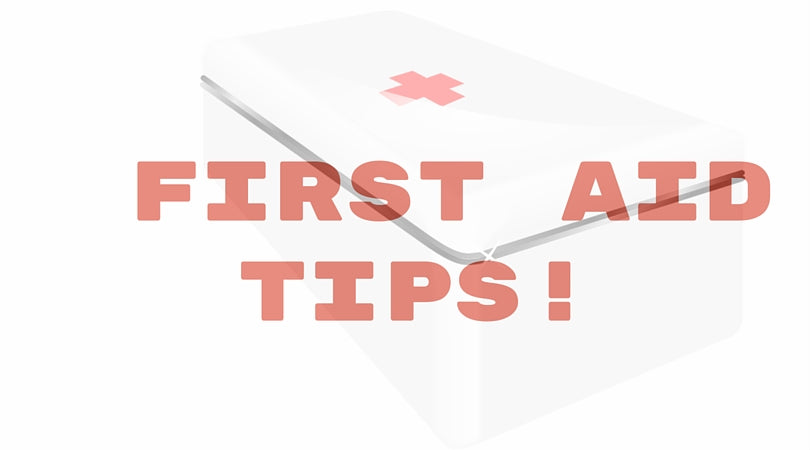
5 First Aid Tips You Should be Familiar With
Share
When living life in the fast lane, we often come across situations when we need to have sufficient first aid knowledge and alas, many of us don’t!
Imagine a scenario where a loved one is in distress and needs your help and you can’t remember the correct treatment! Be sure to brush up on your first aid knowledge to ensure the people around you remain healthy and safe. These are five common first aid situations that you might encounter, and ways to cope with them!1. Cut or scrape:
If there’s bleeding, first press firmly over the site with a clean cloth until it stops. This can be anywhere from 3 to 15 minutes.
Secondly, clean the cut under lukewarm running water and gently pat dry. If the wound is dirty or was inflicted by an animal scratch, rinse it with water and gently lather with soap. If the skin is broken, apply a thin layer of an over-the-counter antibiotic ointment (like Neosporin or Bacitracin), then cover with a bandage or gauze and adhesive tape.
If you can’t control the bleeding after several attempts with direct pressure, call your doctor, or head to an E.R. If a large piece of skin has been removed, wrap it in a clean, slightly wet cloth and place it in a bag over ice — a doctor may be able to reattach it.
An animal bite that has caused a deep cut should be seen by a doctor.
Follow-Up Care: Dab on antibiotic ointment and apply a new bandage daily (or twice daily, if it’s a large or deep wound) until the cut heals.
minutes.
Secondly, clean the cut under lukewarm running water and gently pat dry. If the wound is dirty or was inflicted by an animal scratch, rinse it with water and gently lather with soap. If the skin is broken, apply a thin layer of an over-the-counter antibiotic ointment (like Neosporin or Bacitracin), then cover with a bandage or gauze and adhesive tape.
If you can’t control the bleeding after several attempts with direct pressure, call your doctor, or head to an E.R. If a large piece of skin has been removed, wrap it in a clean, slightly wet cloth and place it in a bag over ice — a doctor may be able to reattach it.
An animal bite that has caused a deep cut should be seen by a doctor.
Follow-Up Care: Dab on antibiotic ointment and apply a new bandage daily (or twice daily, if it’s a large or deep wound) until the cut heals.
2. Burn
Immediately hold under cool running water or apply a cold, wet towel until the pain subsides. Cover any small blisters with a loose bandage or gauze and tape and call a doctor as soon as possible if burns are on the face, hands, or genitals, or if they’re larger than 1/4 inch anywhere on the body. If the burn looks deep — the skin may be white or brown and dry — go to the E.R. For a burn covering a tenth of the body or more, don’t use cold compresses; call 911 and cover the victim with a clean sheet or a blanket to prevent hypothermia until help arrives3. Nosebleed
The first thing to do is sit upright, but don’t tilt your head back. Loosen any tight clothing around your neck. Pinch the lower end of your nose, close to the nostrils, and lean forward while applying pressure continuously for five to ten minutes. Don’t release to check the nose before 5 minutes, as it could prolong the bleeding.4. Eye Trauma
When you have severe pain, constant tearing, light sensitivity, or blurry vision after being poked or hit in the eye, hold a cool, wet cloth over the area and head to the E.R. You may have a scratch on the eye’s surface, which is treated with prescription drops or ointment and usually heals within 48 hours. If a chemical has been splashed in his eye, hold your eyelid open and flush the eye with lukewarm water and call Poison Control.
If a chemical has been splashed in his eye, hold your eyelid open and flush the eye with lukewarm water and call Poison Control.
